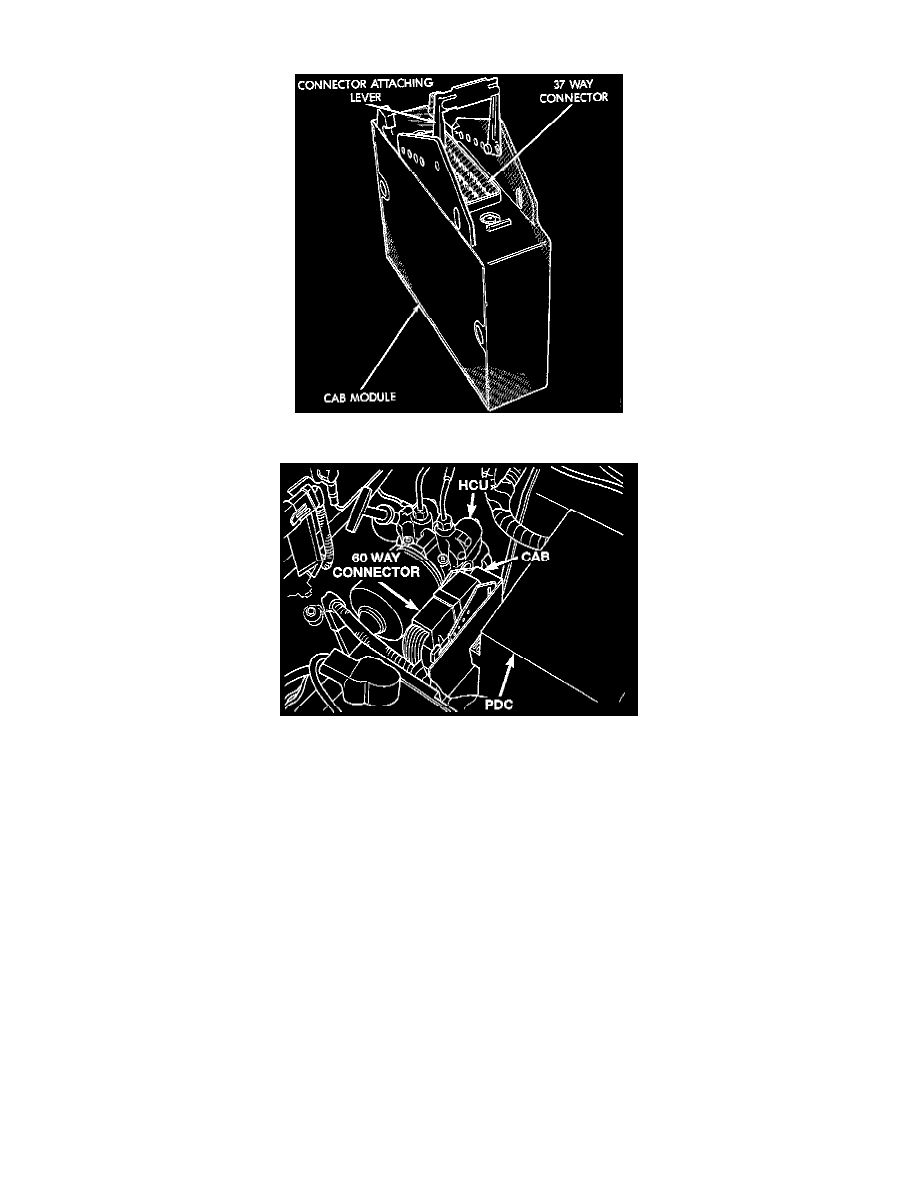Vision V6-3.5L VIN F (1997)

Electronic Brake Control Module: Description and Operation
Controller Antilock Brakes
Controller Location In Vehicle
GENERAL INFORMATION
The Controller Antilock Brakes CAB is a microprocessor based device which monitors wheel speeds and controls the ABS functions. The CAB
contains two microprocessors which receive identical sensor signals and then independently process the information. The results are then
compared to make sure that they agree otherwise the CAB will turn off the ABS function and turn on the warning lights.
The CAB on this vehicle is located in the engine compartment, on the left front inner frame rail. The CAB is connected directly to the Hydraulic
Control Unit HCU by a 14 way electrical connector. To remove the CAB from the HCU it is necessary to remove the HCU from the from the
vehicle. The CAB diagnostic connector is located under the dash, to the right of the steering column. This is the C2D diagnostics connector.
PRIMARY FUNCTION OF THE CAB:
-
Detect wheel spin tendencies
-
Detect wheel locking tendencies.
-
Control fluid pressure modulation to the brakes during ABS operation.
-
Monitor the system for proper operation.
-
Provide communication to the DRB scan tool while in diagnostic mode.
-
Store diagnostic information in non-volatile memory.
The CAB continuously monitors the speed of each wheel through the signals generated by the wheel speed sensors to determine if any wheel is
beginning to lock. When a wheel locking tendency is detected, the CAB commands the HCU to modulate brake fluid pressure in some or all of the
hydraulic circuits. The CAB continues to control pressure to individual wheels, until the locking tendency is no longer present. The ABS and the
ABS with traction control is constantly monitored by the CAB for proper operation. If the CAB detects a fault, it can disable the ABS function and
turn on the ABS warning lamp. If the ABS function is disabled, the system will revert to standard base brake system operation.
